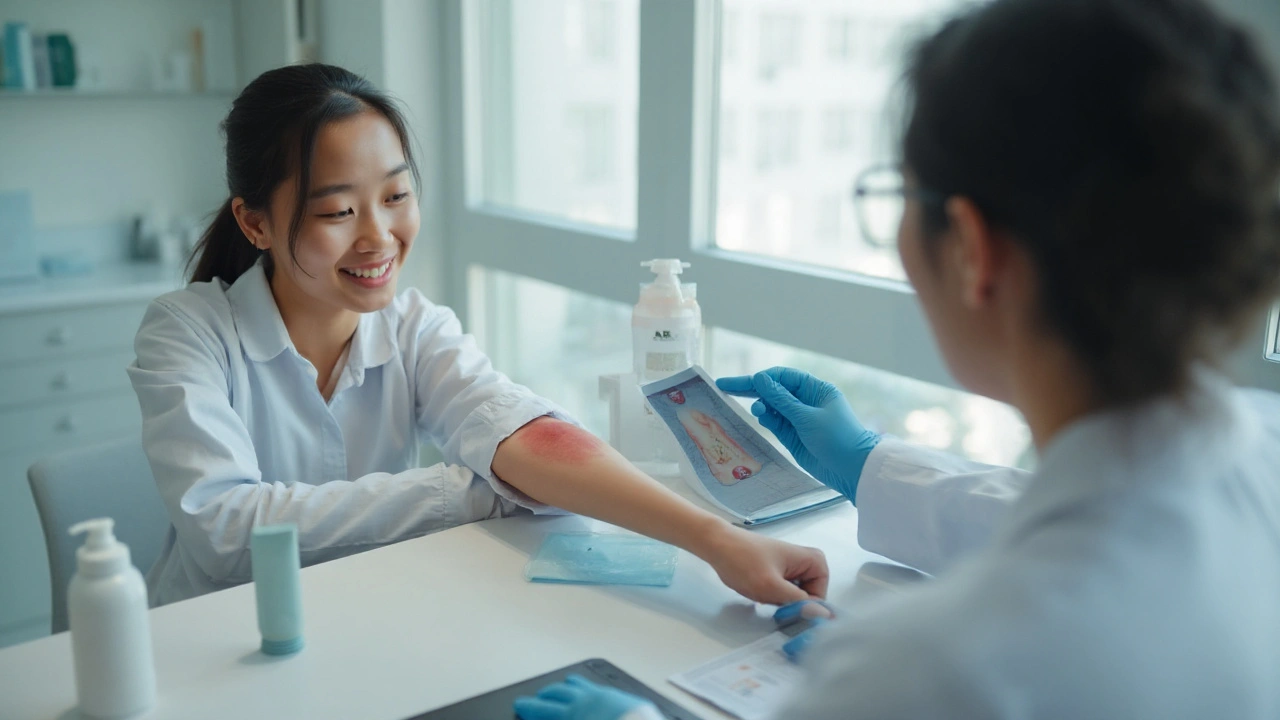Skin Care Resources – Creams, Treatments & What to Watch Out For
If you’ve ever wondered whether that over‑the‑counter cream is right for your rash, you’re not alone. Skin issues show up fast, and the internet is full of conflicting advice. Here we cut through the noise with short, practical guides on the most talked‑about topical meds and how to pick safer options.
Spotlight on Common Topical Medications
Elidel (pimecrolimus) cream – This prescription ointment is often used for eczema when steroids aren’t ideal. It works by calming the immune response in the skin, which reduces redness and itching. You’ll apply a thin layer twice a day, usually for a few weeks. Side effects are mild – a temporary burning feeling is most common. If you’re pregnant, nursing, or have a weakened immune system, talk to your doctor before starting.
Nizoral shampoo – The 1% version is sold OTC for dandruff, while the 2% is prescription‑only for more stubborn fungal infections. It contains ketoconazole, which fights the yeast that causes flakes. Use it twice a week for a month, leave it on the scalp for five minutes, then rinse. It can dry out hair, so follow up with a gentle conditioner. Avoid if you have a known allergy to azoles.
Eurax (crotamiton) cream – This one’s a go‑to for scabies and annoying itch. It blocks the itch signal and kills the mite that causes scabies. Apply a thin layer over the affected area once a day for three nights, then wash off. Some people notice mild skin irritation; if that happens, stop use and seek help.
Hydrocortisone in cosmetics – Many OTC creams hide low‑dose hydrocortisone to give a “quick fix” for redness. In 2025 the labeling rules require clear disclosure, but you still need to read the fine print. Regular use of hidden steroids can thin the skin and cause stretch marks. Look for non‑steroidal moisturizers or barrier creams if you need daily protection.
Choosing Safe Options & Avoiding Hidden Steroids
First, check the active ingredient list. If you see “hydrocortisone,” “betamethasone,” or any other steroid, decide if you really need it. For mild irritation, a good fragrance‑free moisturizer often does the trick. Second, watch the concentration. Over‑the‑counter hydrocortisone is usually 0.5% or 1%; higher strengths require a prescription because the risk of side effects goes up.
Third, consider your skin type. Sensitive skin reacts more easily to alcohol‑based formulas, so pick water‑based products. Fourth, don’t mix too many actives at once – layering a steroid cream under a retinoid, for example, can boost irritation.
Finally, if a product promises fast results without a prescription, be skeptical. Quick fixes often hide stronger chemicals that can do more harm than good. Stick with evidence‑based options, read the label, and ask a pharmacist if you’re unsure.
These guides give you the basics you need to make smart choices for everyday skin concerns. Keep them handy, and you’ll feel more confident the next time a rash or itch shows up.

- Sep, 17 2025
- Comments 9
Nizoral: Official Products, Uses, and Where to Buy (2025)

- Sep, 15 2025
- Comments 11
Eurax (Crotamiton) Guide: Uses, How to Apply, Side Effects, and Scabies Treatment

- Sep, 14 2025
- Comments 5
Elidel (Pimecrolimus) Cream: Uses, Safety, How to Apply, and Alternatives

- Sep, 7 2025
- Comments 17
Hydrocortisone in Cosmetics: Safety, Labeling Rules, and Safer Alternatives (2025 Guide)

- Sep, 4 2025
- Comments 17
Calcipotriol for Scalp Psoriasis: Is It a Game Changer?

- Aug, 7 2025
- Comments 13